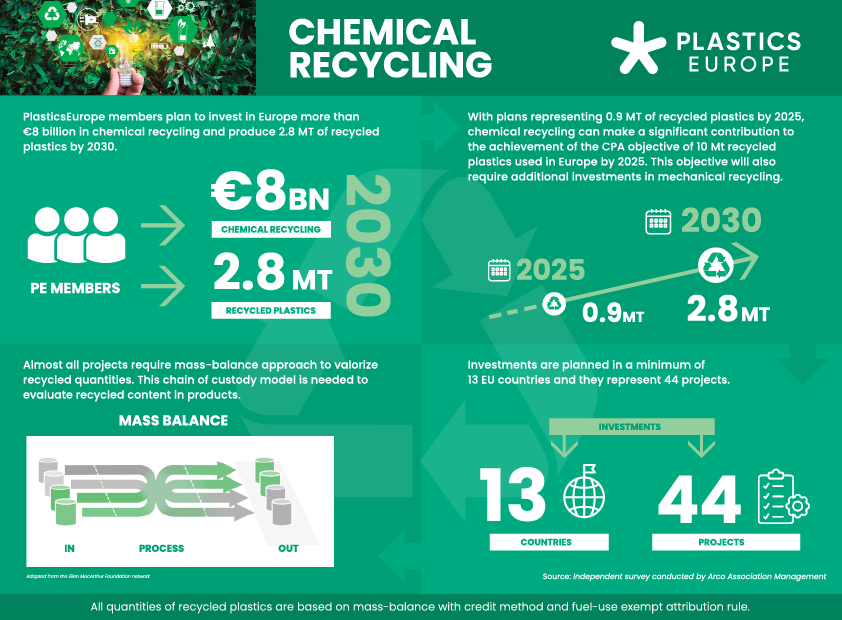Chemical recycling is the process of converting polymeric waste by changing its chemical structure and turning it back into substances that can be used as raw materials for the manufacturing of plastics or other products. There are different chemical recycling technologies, e.g. pyrolysis, gasification, hydro-cracking and depolymerisation.

Planned investments in chemical recycling
Zoom level changed to 7.5[fontFamily: Poppins; fontSize: 14px; fontWeight: 600;]Germany[/] [fontFamily: Poppins; fontSize: 14px; fontWeight: 600]Location:[/][fontFamily: Poppins; fontSize: 14px; fontWeight: 400] Hanau[/] [fontFamily: Poppins; fontSize: 14px; fontWeight: 600]Feedstock:[/][fontFamily: Poppins; fontSize: 14px; fontWeight: 400] PET waste[/] [fontFamily: Poppins; fontSize: 14px; fontWeight: 600]Capacity (t input/a):[/][fontFamily: Poppins; fontSize: 14px; fontWeight: 400] 160,000[/]Data is based on the announcement made by members and non-members of Plastics Europe; Latest data update was done on May 2023.
What are the benefits of chemical recycling?
Chemical recycling complements other plastic recycling options like mechanical, dissolution and organic recycling. Since it can deal with complex plastic waste streams, like films or laminates, chemical recycling can be used for plastic waste, which would otherwise result in incineration or landfill. With 67.5% of post-consumer plastic waste going to landfill and energy recovery across Europe, there is a clear potential for improvement.
Because chemical recycling breaks down polymers into their building blocks, it also allows the production of recycled plastic (recyclate) with virgin plastic properties that can be used in demanding applications, such as food contact.
The European Commission has set very ambitious circularity objectives for plastics. Regulatory targets of the recently revised waste directives are 10% max landfilling of municipal waste by 2035, 50% recycling of plastic packaging by 2025 and 55% by 2030. In this context, chemical recyclingrepresents a positive step towards reducing disposed waste and contributing to a circular economy for plastics. There is also a huge potential for new jobs as the sector develops.

Significant investments in recycling technology
We have seen a significant increase in planned chemical recycling investment: from EUR 2.6 billion in 2025 to EUR 8 billion in 2030. The production of recycled plastics is estimated to increase to 0.9 Mt in 2025 and 2.8 Mt in 2030. With this planned contribution, Plastics Europe plays a leading role in delivering on the European Commission’s Circular Plastics Alliance target of 10 Mt recycled plastics used in European products by 2025. Conversion to feedstock technologies (pyrolysis, gasification) represents 80% of the planned capacities.
There are many ongoing projects in the plastics and recycling industries to make this technology more widespread – we have 44 planned projects in 13 EU countries.
